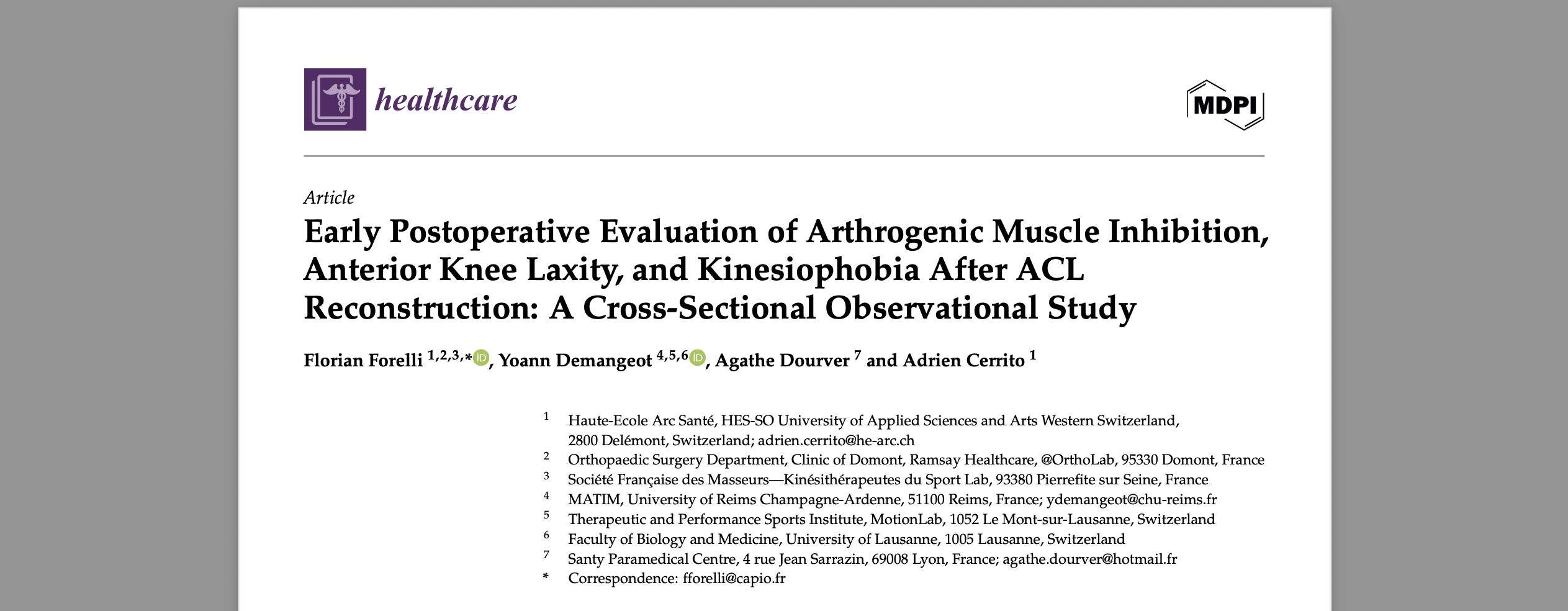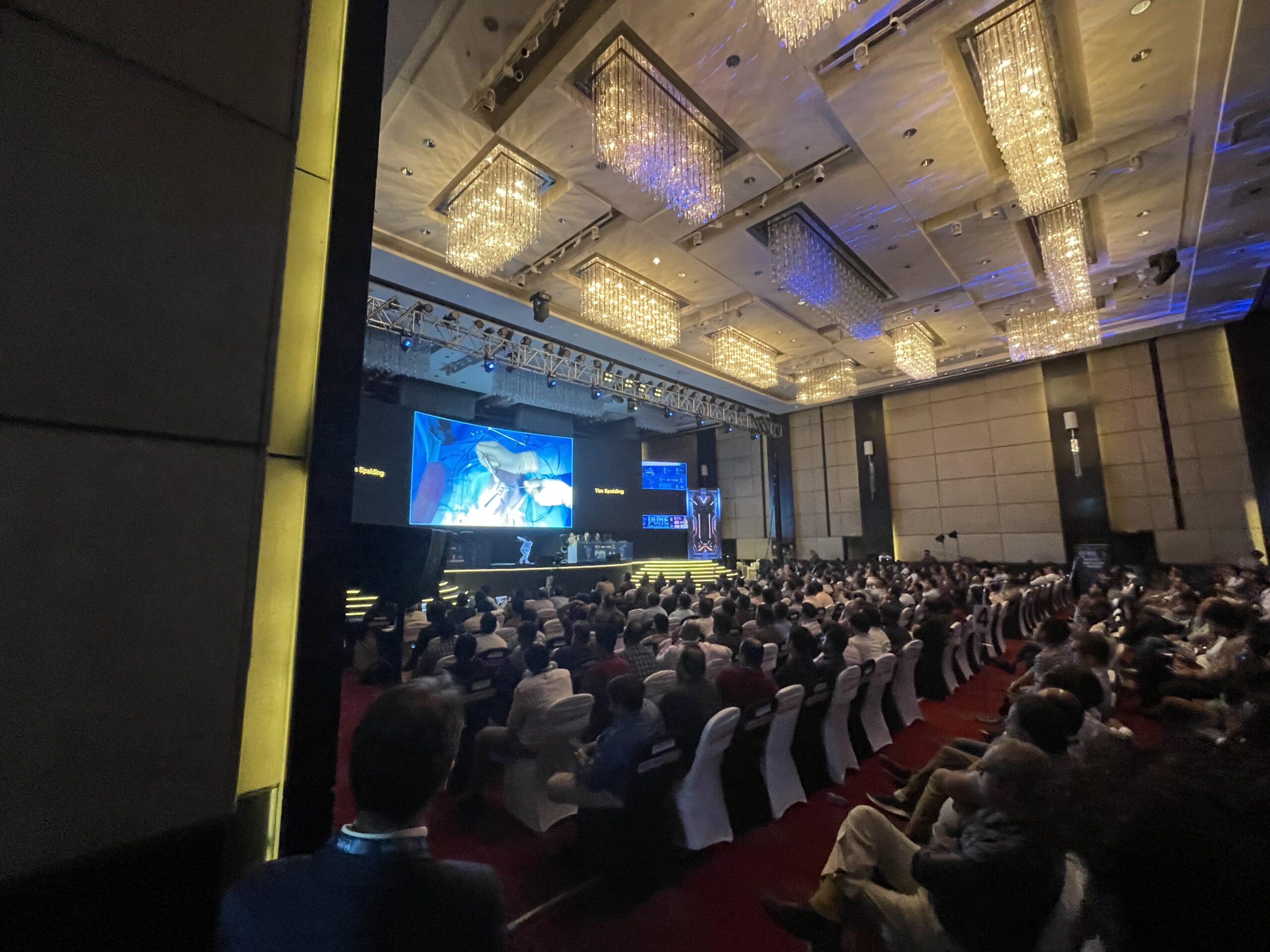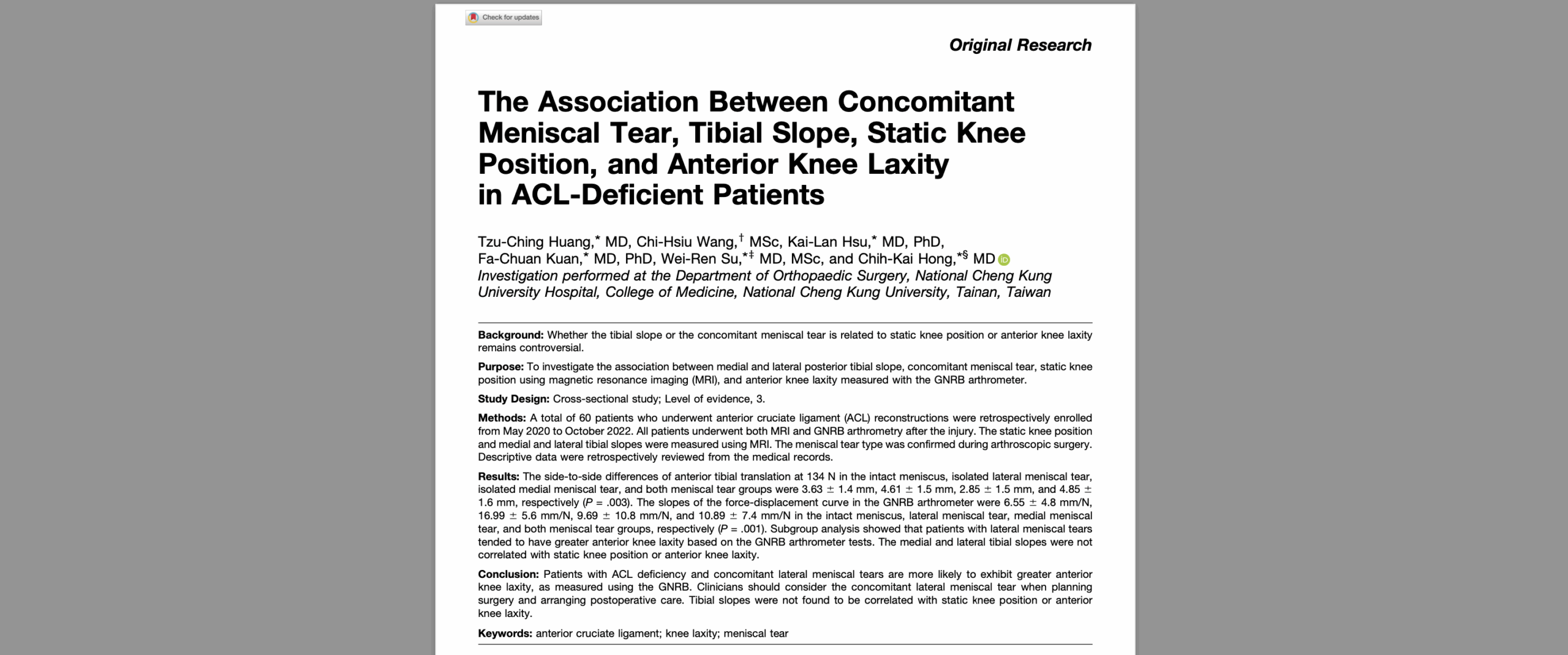We are pleased to announce the release of our in-depth Dyneelax tutorial video, showcasing the full capabilities of this advanced robotic arthrometer. The Dyneelax system provides clinicians with a cutting-edge solution for measuring both anterior tibial translation and rotational laxity of the knee, allowing for a complete and objective analysis of knee stability.
This new video offers a step-by-step guide on how to use Dyneelax, from initial setup to interpreting the results. Dyneelax not only measures anterior-posterior translation, like many traditional arthrometers, but also assesses internal and external rotation, ensuring a more comprehensive diagnosis of knee ligament injuries.
Watch the Dyneelax Tutorial Now
For further information, or to schedule a live demonstration, feel free to contact us or visit our website at arthrometer.com. We are committed to advancing knee stability assessment through innovative and validated tools like Dyneelax, helping you deliver better outcomes for your patients.
Key Features Covered in the Tutorial
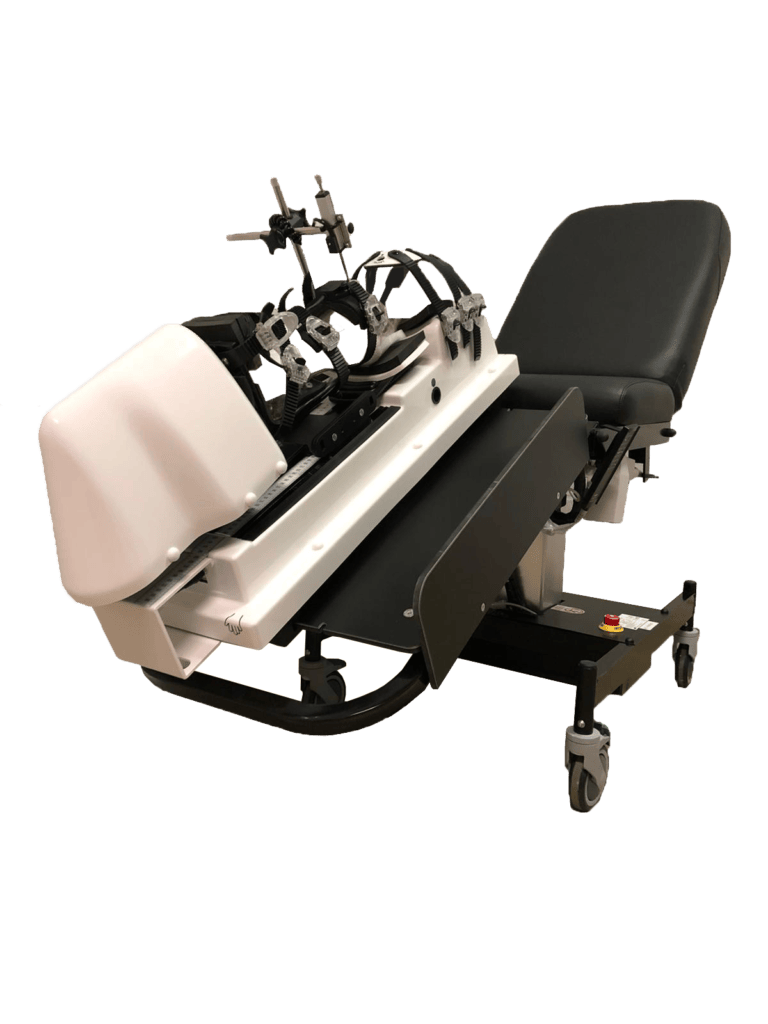
- Dynamic and Precise Measurements: Dyneelax simulates natural knee movements, providing precise measurements of knee laxity under both static and dynamic conditions.
- Objective and Reliable Data: The system delivers quantifiable data for both translation and rotational laxity, which are critical for diagnosing ACL, PCL, injuries and analysing pheripheral ligament structures.
- User-Friendly Interface: The tutorial highlights Dyneelax’s intuitive interface and demonstrates how easily it can be integrated into clinical workflows, improving diagnostic accuracy and reducing the time required for comprehensive knee evaluations.
Dyneelax’s Unique Contribution to Knee Stability Analysis
What makes Dyneelax unique is its ability to measure both translation and rotation. While anterior-posterior translation is essential for assessing anterior cruciate ligament (ACL) injuries, rotational laxity is critical for evaluating posterior cruciate ligament (PCL) and collateral ligament involvement. Dyneelax captures these multi-dimensional movements, allowing clinicians to obtain a complete picture of knee stability.
For example, in a cadaveric study published by Guegan et al. (2024), Dyneelax was used to measure the contributions of various medial knee structures in controlling anterior tibial translation (ATT) and tibial rotation. The study found that structures such as the anterior cruciate ligament (ACL), medial collateral ligament (MCL), and posterior horn of the medial meniscus each play specific roles in controlling knee movement. Dyneelax’s precision in measuring both translation and rotation allowed the researchers to pinpoint each structure’s contribution, reinforcing the device’s value in comprehensive ligament assessments.
Validating Dyneelax: Clinical Studies
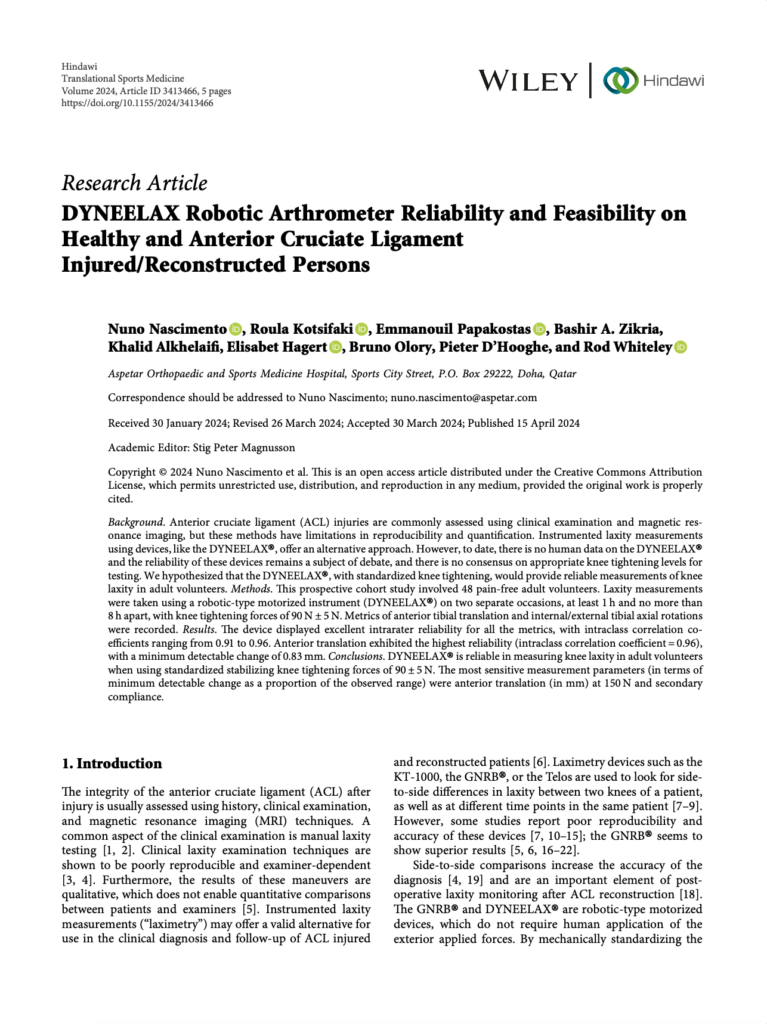
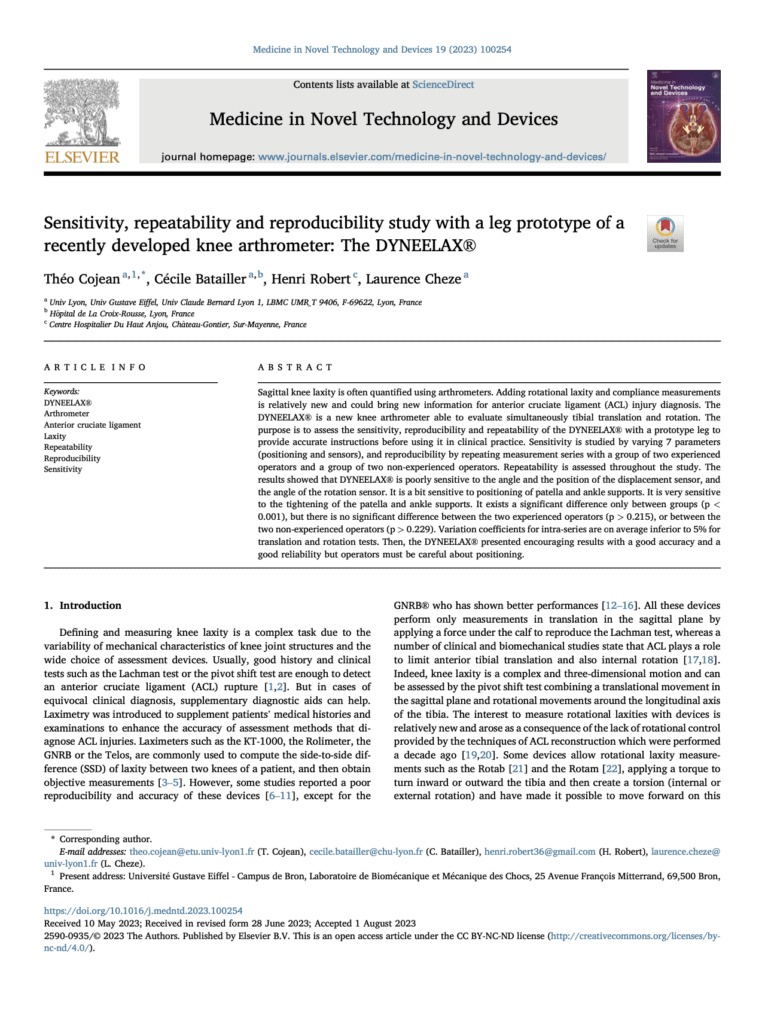
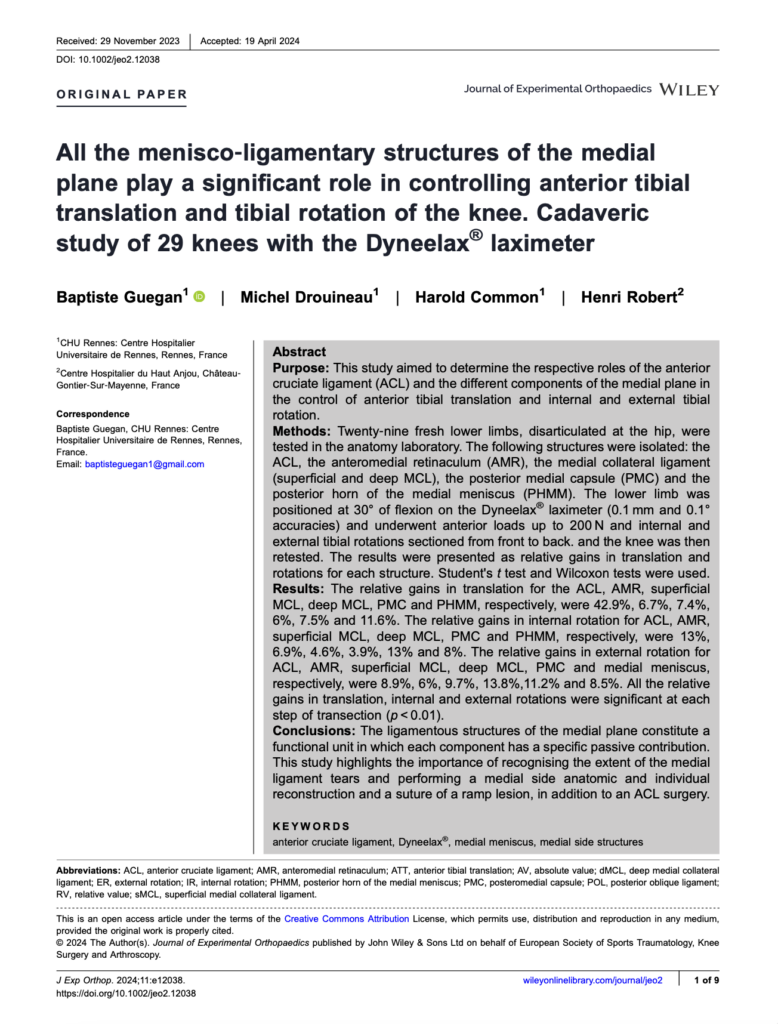
Several clinical studies have demonstrated the reliability and effectiveness of Dyneelax for knee stability evaluation:
1. Nascimento et al. (2024) conducted a study on 48 adult volunteers to test the reliability of Dyneelax in measuring knee laxity, including both anterior tibial translation and rotational laxity. The study concluded that Dyneelax had excellent intra-rater reliability, with intraclass correlation coefficients (ICCs) as high as 0.96 for anterior translation and 0.91 for rotational measurements. This level of precision confirms that Dyneelax provides consistent, objective data that is highly reliable for both clinical and post-operative evaluations .
2. Another study, Cojean et al. (2023), highlighted Dyneelax’s sensitivity and reproducibility in a clinical setting. The research showed that Dyneelax could accurately measure small changes in knee laxity, even in challenging cases such as ACL reconstructions or partial ligament tears. The device’s ability to simultaneously measure both anterior translation and rotational laxity was emphasized as a key advantage over traditional devices that only assess one plane of motion .
3. In a cadaveric study by Guegan et al. (2024), researchers tested 29 fresh knee specimens to assess the relative contribution of various ligament structures in controlling knee translation and rotation. The study found that the ACL was the primary restraint for anterior tibial translation, while structures like the medial collateral ligament (MCL) and the posteromedial capsule (PMC) played significant roles in rotational stability. Dyneelax’s precision in detecting these small but crucial movements was a major factor in the study’s findings
The Clinical Impact of Dyneelax
The ability to measure both translation and rotation provides clinicians with a more detailed assessment of knee stability, particularly when diagnosing complex injuries such as multiligament tears or tracking recovery after ACL reconstruction. Dyneelax’s objective measurements are especially useful in post-operative care, as they offer a precise way to monitor rehabilitation progress and make data-driven decisions about a patient’s readiness to return to activity.
We encourage you to watch the full tutorial to see how Dyneelax can elevate your practice by offering a complete and objective analysis of knee stability. The video covers everything from initial setup to interpreting results, ensuring that you can utilize Dyneelax to its full potential.


